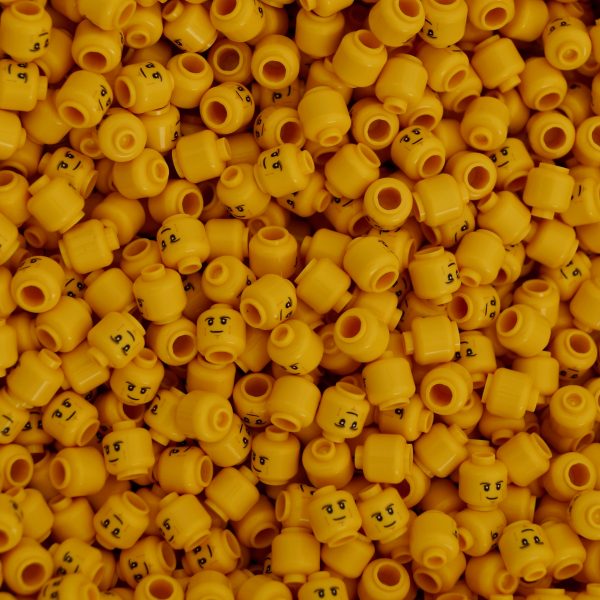Why Is It Important to Make Children’s Thinking Visible?

Key Points:
- Meaningful learning takes place when children are fully engaged in the ideas of the learning experience – when they ask questions children are engaging in ‘meaning making’ processes (Ritchhart & Perkins, 2008).
- Observational drawing or storytelling, together with hands-on learning experiences and experiential learning experiences, are effective ways of visualising children’s ideas.
- “See, Think, Wonder” is a thinking routine attributed to Project Zero, Harvard Graduate School of Education – it is a tool that can be used to observe children’s creativity or emerging interests in play.
- When we visualise children’s thinking, we see their world through the child’s lens. Through making children’s thinking visible, teachers capture valuable out-of-the-box ideas and connect them in meaningful ways to ongoing learning experiences.
Learning as a consequence of thinking
If we see learning as a consequence of thinking, then it is paramount that children have the opportunity and are supported to explore their ideas and thinking during the learning experience. This allows children to then understand their own thinking process. Meaningful learning takes place when children are fully engaged in the ideas of the learning experience – when they ask questions children are engaging in ‘meaning making’ processes (Ritchhart & Perkins, 2008).
In teaching, I am often wondering what children are thinking? What kind of open-ended questions I should ask them to prompt them to ask (more) questions, and how do I guide them to find the answers themselves. Most importantly, how can I understand children better and gain expertise about them to be able to support their learning and inform my role as a teacher.
In my teaching practice, I have discovered that the most straightforward answers to my questions are to make children’s thinking visible. The Early Years Learning Framework (EYLF) (DEEWR, 2009) states that children best express their ideas and do meaning-making through creative art, such as drawing and painting. Furthermore, making children’s thinking visible can provide us with information on which our curriculum planning should be based, to understand children’s thinking processes and reasoning, as well as help us to identify any misconceptions, developing theories or hypothesis children may have on knowledge, so that we could address them as early as possible.
Children learn through their five senses
To visualise children’s thinking, in my teaching practice, I have found a combination of observational drawing or storytelling, together with hands-on learning experiences and experiential learning experiences, are effective ways of visualising children’s ideas. These ideas could be simply the living things children discovered in the garden or their wonderment at ‘how does a fish swim?’ My intention for using this combination of methods is related firstly to the hands-on experiential way children learn through their five senses.
Experiential learning experiences provide children with opportunities to touch, smell, look, hear, and taste (Kaltman, 2010). Secondly, observational drawing or storytelling is like the finishing-part of the learning experience, as it assists me to capture children’s knowledge in the moment, in ways that allow me to identify children’s thinking and learning processes. When children are in the moment of learning their attention and memory are fresh. Transferring their fresh memory onto a piece of paper helps children consolidate and see their knowledge in the learning experience.
During the teaching process, however, I would pay more attention to the learning process rather than the result and be present in the learning with children. This is because in children’s valuable learning moment, as a teacher, I would be able to assess why children choose to visualise their thinking in a certain way.
I see, I think, I wonder
Take observational drawings as an example. In the Preschool Room at Gowrie Discovery House in Canberra, I have a “See, Think, Wonder” basket (see Figure 1) where I put a set of clipboards, paper, and pens. “See, Think, Wonder” is a thinking routine I learnt about when reading about the Harvard Graduate School of Education’s Project Zero – it is a tool I use whenever and wherever I observe children’s creativity or emerging interests in their play. By inviting children to show, explain and illustrate their ideas on a piece of paper to capture their thinking process children are empowered, have ownership of their learning, and they can invite the teacher to be part of their thinking process and play if they choose to. Whilst explaining their drawings, children also practice their reasoning skills and communication skills. Additionally, I have observed that sometimes children develop new plots and add new characters in their creation when sharing ideas with me, and they would go back to their work and add these details.

Fig. 1: I see, I think, I wonder working tray
How to prompt children’s reasoning behind their own learning and creation
See Figure 2, children collaboratively created a massive castle with the blocks. Although they worked together, one child focused on his racing track of the castle, and one child focused on the ocean world part of the castle. In their castle, cars and sea animals are friends. At the end of the block creation, children were invited to illustrate their creations on the paper. Here, I would like to point out one key thing often overlooked by teachers is an awareness of how their role influences the direction of children’s play. For example, I often observe teachers imposing their own ideas on children’s play when children are creating instead of following children’s lead. I see that this would hinder children’s creativity so I always bear in mind that my role as a teacher is to facilitate and not intervene in children’s creation, especially in child-led activities. I do not interrupt the children’s learning opportunities.
I would particularly pay attention to whether I am giving children enough space and time with their creations and guiding their exploration through. This shows how critical it is for teachers to bear in mind their role in children’s learning and play – teachers need to analyse the play context then decide whether they are a play observer, a play consultant, or a play enhancer.
Learning opportunities like Figure 2 are everywhere in our program and happen throughout the day. Capturing these learning moments requires the teachers to have an observant eye. Focusing on children’s thinking also empowers them and it helps to build a mutually respectful teacher-children relationship where children would feel comfortable speaking up (Ritchhart & Perkins, 2008). Using another example, we are fortunate to have a French window in the classroom, through which children often look outside and can see the growing Ornamental Pear Trees and other buildings.

Children’s valuable learning moments
See Figure 3, one day during quiet time, some children were sitting in front of the window and were simply looking at leaves because they were moving. One child pointed to it and said “It’s wind! It’s wind!” another one said, “No, the leaves are dancing!”. I quickly offered them paper and pens and invited them to illustrate “What do you see? What do you think? And what do you wonder?” These are key questions that form the thinking routine I use with the children to help them connect their observation to their thinking together.
The wonder part is trickier so I will often facilitate their ideas by asking: “do you have any questions about this?” As I write down children’s words for their work, I ask them “what makes you say that?” and “what is happening here?” to dig deeper into their thinking process. Making children’s thinking visible could take place in spontaneous learning experiences and planned ones.
For instance, in the STEM learning corner, children have been learning about bean germination. Children prepared the beans in the wet cotton ball and sealed them in the bags. Each day they observed and compared the changes in each bag and recorded it in their observational drawings (see Figure 3).
When we visualise children’s thinking, we see their world through their lens. By making children’s thinking visible, teachers capture valuable out-of-the-box ideas and connect them in meaningful ways to ongoing learning experiences that reflect children’s emerging interests and connections to the curriculum. In this visible journey, I learn more about children, and I grow as a teacher as children empower me by asking wonderful questions that I mostly never thought of asking myself.


List of strategies I use when visualising children’s thinking:
- Use “I see, I think, I wonder” thinking routine to guide children’s thinking process
- Use “what makes you say that?” thinking routine to prompt children’s reasoning behind their own learning and creation
- Bear in mind my role as a teacher in children’s valuable learning moments, to not interrupt their learning, give them space and time to create and reflect on their learning
- Bear in mind to not impose my ideas on children’s creation.
This piece has been reshared on The Sector with the kind permission of Gowrie NSW and is the work of author – Yixin Zhang, Team Leader | Pedagogical Leader | Preschool Room, Gowrie NSW Discovery House, Canberra (at time of creation). To access the original work please see here.
References
Department of Education Employment and Workplace Relations [DEEWR]. (2009). Belonging, being and becoming: the early years learning framework for Australia. Canberra: Department of Education, Employment and Workplace Relations Retrieved from http://docs.education.gov.au/system/files/doc/other/belonging_being_and_becoming_the_early_years_learning_framework_for_australia.pdf.
Kaltman, G. S. (2010). Hands-on learning. Childhood Education, 87(2), S7+. Retrieved from https://link.gale.com/apps/doc/A245884666/AONE?u=anon~5464a5cf&sid=googleScholar&xid=5e7272df
Ritchhart, R., & Perkins, D. (2008). Making thinking visible. Educational leadership, 65(5), 57
Popular

Workforce
Policy
Quality
Practice
Provider
Research
ECEC must change now, our children can’t wait for another inquiry
2025-07-02 07:47:14
by Fiona Alston

Workforce
Practice
Provider
Quality
Research
Supporting successful transitions: Big moves, big feelings
2025-06-26 11:00:30
by Fiona Alston

Practice
Quality
Research
When joyful autonomy matters so much more than curriculum outcomes
2025-06-25 09:30:36
by Contributed Content













